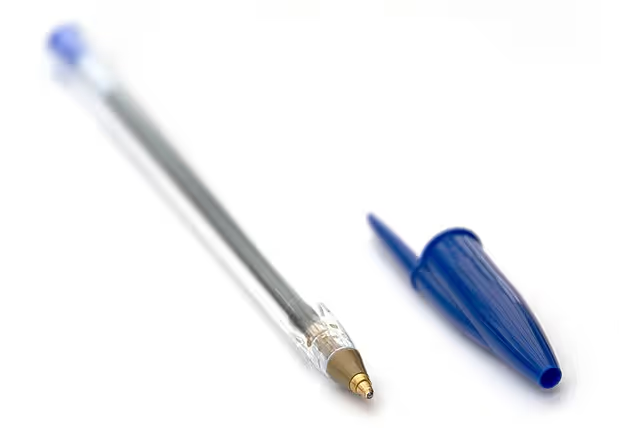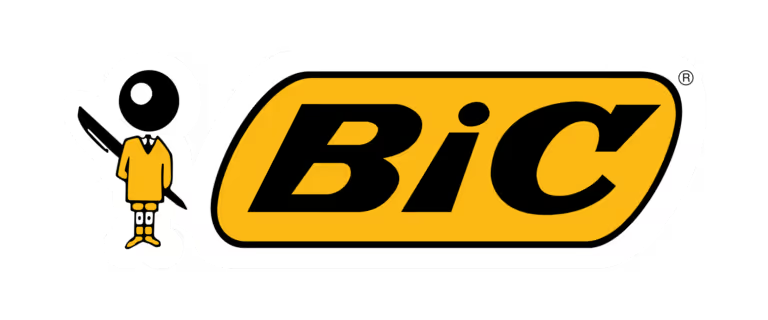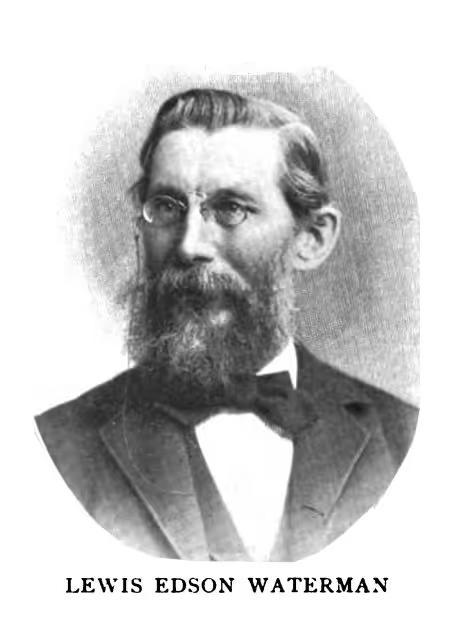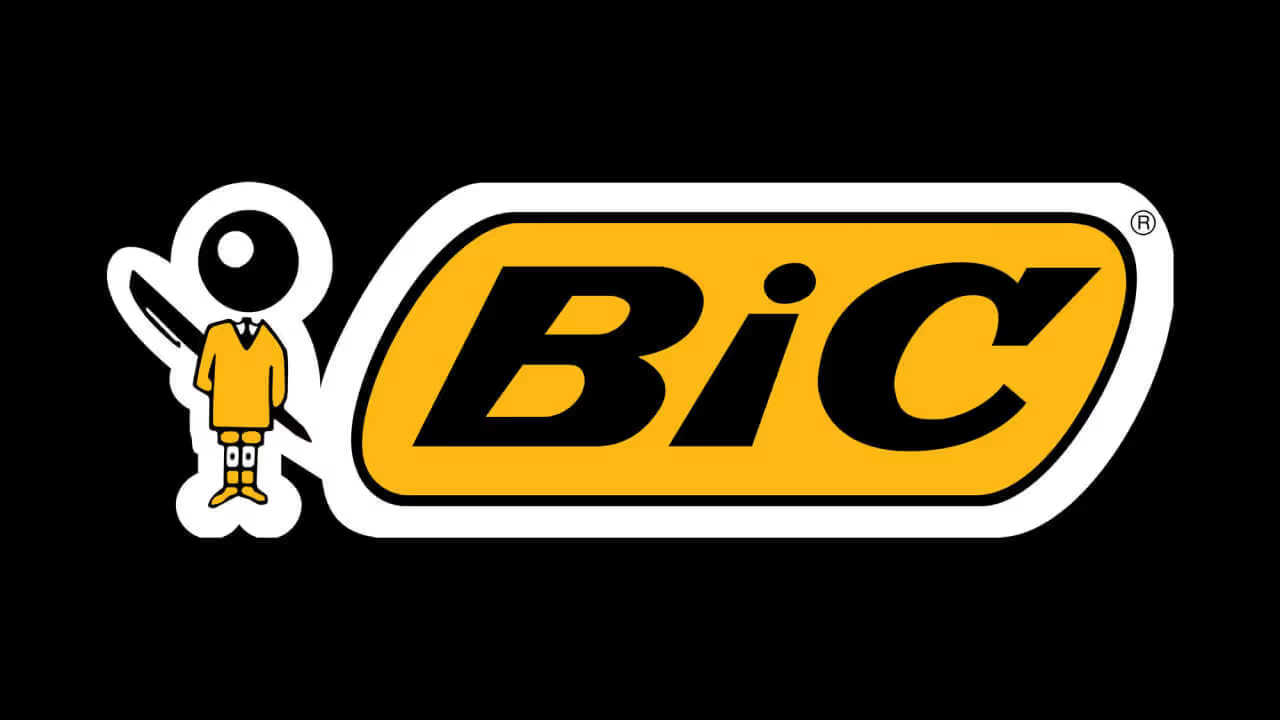BIC is one of the world’s leading manufacturers of lighters, pens, shaving, and promotional products, bringing simplicity and joy to people’s lives.
From beginning their day by using BIC razors to ending it after journaling using BIC pens, millions of people around the globe have grown up using BIC (pronounced: beek) products. Look around, maybe you have a few besides you right now.
Yet the journey of such a renowned brand began in a leaky shed in Clichy in 1945 with just a vision – to give everyone, everywhere, the power of creative expression.
Today, after almost eight decades, BIC has cemented its place as an iconic manufacturing powerhouse and has made a place in every heart and home.
Key 2021 Statistics and Facts Highlighting BIC’s Success
- Revenue of €1.8 billion
- Profit of €279.8 million
- Total assets of €2.2 billion
- Has 24 factories in 4 continents
- Over 10,000 employees worldwide
- Stock price of €52.2 as of June 2022
- BIC market share increases or remains firm in strategic segments and countries
So, how did BIC manage to grow in terms so size, stature, and reputation over the year?
Let’s review its incredible growth journey and the strategies the company implemented along the way!
BIC Begins With A Simple Vision & Clear Action Plan
With just a simple vision – to democratize writing and give people the power of freedom of expression – BIC’s foundations were laid in 1945
How BIC Got Started?
Marcel Baron Bich was a production manager at an ink company. He resigned from his position and joined hands with Edouard Buffard to establish a manufacturing unit in 1945.
In these early days, Bich produced manufacturing parts for fountain pens and mechanical pencils.
After acquiring a full-scale factory called PPA - Porte-plume, Porte-mines et Accessories, Bich’s next step was to become a reliable producer of plastic barrels used in ballpoint pens for other manufacturing companies.
In 1949, Bich began to improve the revolutionary ballpoint design introduced by Ladislas Biro, a Hungarian inventor. The challenge met by early ballpoint pens in the market was their tendency to leak and clog. However, Bich combined Swiss watchmaking techniques with Biro’s design to come up with stainless steel tips for his ballpoints.
In December, 1950, Marcel Bich launched his own ballpoint pen, BIC Cristal, under the BIC brand in France - an innovation that proved immediately popular and successful. The non-retractable ballpoint pen’s simple design, sold at 19 cents, made it a reliable and affordable purchase.
BIC’s founders’ entrepreneurial spirit encouraged them to buy Ladislas Biro’s patent for $2 million (after adjusting for inflation) in 1953.
With Biro's patent purchase, PPA transformed into Societe BIC, which is shortened and now popularly known as BIC.
BIC’s Innovation With the Ballpoint
Décolletage Plastique, the design team at Societe PPA, perfected the ballpoint by investing in cutting-edge Swiss technology of the time. Innovative technologies such as the one that could shape the metal down to 0.01 milliliters were brought in.
Consequently, a one-millimeter stainless steel sphere was created that allowed the ink to flow smoothly and guided the writer effortlessly.
However, another challenge remained: the ink was susceptible to clogging and leakage. To overcome yet another design challenge, Bich made ink with an ideal viscosity that neither leaked nor clogged.
The final ballpoint pen was launched as Cristal. Not only was the product a commercial success in Europe, but it also received rave reviews from creators and pioneers of the time. The Cristal was also featured in the Phaidon Design Classics.
Another feather in BIC’s cap was BIC Cristal’s induction into the Museum of Modern Arts (MoMA)’s permanent collection – a nod to BIC’s everlasting legacy.

Early BIC Global Strategy in 1950-1960
After introducing BIC Cristal in Belgium in 1951, the company’s transformation into Societe BIC in 1953 allowed them to expand to more European centers, including the Netherlands and Switzerland.
By 1955, annual sales for BIC ballpoint pens were crossing $5 million. The following year in 1956, BIC launched its retractable M10 pen and entered the South American market that had its own challenges lying in wait for Bich. Here is a high level overview of BIC's timeline as it's published on its website:
- In 1957, BIC ventured in Ireland, Australia, New Zealand, and South Africa.
- In 1958, BIC entered the North American market.
- In 1959, BIC introduced its products to the Scandinavian population in the Scandinavian market.
- Around 1960, BIC was brought to Africa and the Middle East by leveraging local distributors.
- As 1965 emerged, BIC became a choice for Japanese consumers in Japanese markets.
All You Need To Know About BIC’s Brand Image
In 1950, when Marcel Bich introduced his famous BIC Cristal pen, BIC’s logo looked a lot different than how it is today. It was made up of three letters, “B I C,” packed inside a red parallelogram with the corners rounded off.
The logo we know today has a boy in an orange (Pantone 1235C) uniform with a ballpoint ball for a head. The logo is coupled with a distinct wordmark in black and orange (Pantone 1235C) that reads “BIC.”
French artist Raymond Savignac created the logo in 1961. The inspiration for the logo came from school children and students, who were one of the most lucrative market segments for BIC.
The head of the tungsten carbide ball was formed to highlight BIC’s unique selling feature that marks its distinctiveness from other competitors.
Having developed the iconic BIC Boy logo, Savignac stayed with the company for over two decades and created more than fifteen posters.

Key Takeaway 1: Invest Heavily On One Idea To Drive Exponential Growth
Even though BIC began its business manufacturing parts for fountain pens and mechanical pencils, it soon realized that there lay immense potential in the ballpoint.
Consequently, the company invested heavily in acquitting the patent for its technology and improving the technical aspects of the ballpoint.
This product not only announced its arrival in the local market but also paved the way for the company to enter international markets.
Likewise, new companies seeking to establish their brand should look to invest and focus on particular idea or product rather than expanding their portfolio too soon. Less is often more!
BIC Expands & Diversifies Post 1960s To Grow Exponentially
After acquiring a significant chunk of the ballpoint market share, BIC looked to venture into the US and build a more diversified product portfolio.
BIC Expansion Strategy In The US
While the market was ripe for BIC’s products, BIC could not accurately quantify the US market, which was already saturated with inexpensive, low-quality pens. Consequently, entering the US market was not as accessible as the European market.
Furthermore, a major obstacle was because of PaperMate pen company, bought by Gillette in 1955, which had already established its dominance in the American market.
Thus, BIC planned a strategic move in 1958 to enter the US market by first purchasing 60 percent of the Waterman Pen Company for a million American dollars.
Waterman Pen Company was then owned by Lewis E. Waterman, who was the inventor of the first fountain pen dating back to 1884. However, since the ballpoint pen grew in popularity, the demand for fountain pens had taken a drastic plunge. Bich was able to buy the rest of the company at an insignificant cost.

The purchase gave Waterman Pen Company the leverage to establish its headquarters in Connecticut under the new company name, “Waterman-BIC.”
To penetrate the already-saturated US market, Waterman-BIC started a full-fledged TV campaign to advertise its pens as staying as new as on day one under the slogan, “First Time, Every Time.”
The campaigns demonstrated how Waterman-BIC pens could still work as though they were being used for the first time, even after going through gruesome scenarios such as being drilled and shot from guns. Further, Waterman-BIC consciously decided to sell their pens in grocery stores and small shops that were more accessible to students.
This also allowed BIC to avoid shelf competition from expensive pens at the extensive department and general stores.
BIC’s Diversification Strategy Helps It Win Over Competitors
The strategic marketing tactics had worked, and by 1967, Waterman-BIC was ranked as the largest pen-maker in the US, with its production units nearing over 500 million pens per annum.
By 1971, Waterman-BIC renamed itself the BIC Pen Corporation, which Bich thought accurately represented its business as they were now covering 60 percent of the pen market in the US.
Then, in 1973, BIC strategized to take up a brand-new challenge and diversify its existing product portfolio.
The new initiative to introduce luxury cigarette lighters was undertaken around the time when its direct competitor Gillette had acquired a French company manufacturing premium cigarette lighters named S.T. Dupont. As Dupont worked on its version of an economical disposable cigarette lighter, Cricket, to introduce in the US market, BIC’s lighters had also passed the development process and were soon launched by 1973.
Gillette was indeed a solid competition for the BIC Pen Corporation with a significant hold over the US market, but Gillette’s position was not uncontested.
Once again, BIC took the support of creative marketing campaigns to sell its lighters. The advertising campaign was coupled with a reduction in the price of BIC’s lighters – well below one dollar leading to a price war between BIC and Gillette. By 1978, disposable lighters had become one of BIC’s most prolific and profitable ventures, surpassing the sales of Gillette’s Cricket.

BIC had emerged victorious. Gillette, defeated and depleted, exited the market.
BIC Gains Competitive Advantage Over Gillette
The competition between BIC and Gillette had just started.
Soon, following the success of BIC’s disposable plastic shaver introduced in Europe in 1975 by BIC’s parent company, BIC decided to explore this new segment further and introduce the shavers in the US. Disposable shavers were Gillette's primary product line, and they ruled the US market for over 70 years after being introduced by the company in 1903.
To leverage its already strong position in this segment, Gillette introduced disposable shavers in the US a year before BIC could.
However, Gillette didn't anticipate a massive demand for disposable shavers. Since they were costlier to make and sold for less than Gillette's other products, Gillette did not fully capitalize on the opportunity.
When BIC finally introduced its disposable shavers, the response was tremendously positive as the disposable shavers were primarily used by teens and women. BIC relied on heavy marketing commercials comparing its shavers to Gillette’s and claiming the same results for half the amount.
By 1982, BIC had sold enough shavers and lighters to claim the status of a leading manufacturer of lighters and shavers, adopting a new identity well-suited for all its ventures by the name BIC Corporation. BIC had progressed and penetrated far enough to be able to remove the word “Pen” from its company name.
The corporation understood the many benefits of diversifying and exploring new prospects, and had the astonishing ability to take up one challenge after the other, continuously competing for market share with the industry’s best leaders and winning them over.
BIC Business Model Leverages Both Old and New Products
Alongside the introduction of an entirely new range of products, BIC was not ignoring the stationery segment that had previously brought it so much success either.
In 1992, BIC made yet another strategic purchase by acquiring Wite-Out Products Inc. to extend its stationery product line.
This time, BIC was not entering a new market but expanding its very own “writing” segment through which it previously sold ballpoint pens. Under the name BIC Wite-Out, the company introduced its first correction fluid in the US, which was met with great success.
In the same year, BIC announced its highest sales and revenue and started trading on the NYSE.
Key Takeaway 2: Focus On Targeted Marketing Campaigns To Increase Market Share
Advertisements can enhance a brand experience by creating associations between the product and its unique qualities. BIC’s creative advertisement campaign served to instantly drive home what made the product stand out among other options.
BIC also strategically targeted stores accessible to the demographic the product was designed to appeal to. The success of this tactic proves that knowing your customers and what they value is one of the most important ways to ensure that your product gains a prominent place in the market, even if that place initially seems to be relatively niche compared to other competitors.
BIC was able to overtake Gillette through its disposable shavers because it aptly identified the consumer need and then introduced a similar line for women, becoming the first one in the industry to market a shaver specifically targeted at women. It is a lesson that companies must swim in the Blue Ocean, which are uncharted territories where competition is non-existing.
BIC’s Portfolio Of Amazing Products Drives Growth
BIC’s colorful and well-diversified portfolio of products helps it attract new customers and retain existing ones.
BIC Revenue Growth With BodyMark and Coloring
BIC produces markers in four categories: permanent, single, metallic, and temporary tattoo markers.
The brand’s “Intensity Fashion” permanent markers show lasting colors on a range of surfaces from glass to plastic and are even undeterred by grease and dampness.
Most consumers have used regular coloring markers to draw tattoos on the skin on birthdays and similar events, but BIC BodyMark is created especially for use on skin.
In 2018, BIC collaborated with Swedish tattoo artist Miryam Lumpini, known for her vibrant and mystical designs, to launch their line of temporary tattoo markers under the name “BodyMark."
Recognizing tattoos as a popular form of creative self-expression, BIC’s BodyMark makes experimenting with ink accessible for everyone - without pain or permanence. The product comes in eight different colors with a fine tip and "low-odor cosmetic grade ink" which is both skin-friendly and long-lasting. The felt tip is suitable for drawing thin lines and filling in color.
While BIC is not the first or the best-selling name in a global temporary tattoo market valued at $809.8 million, according to 2019 estimates, the marker form allows more freedom with design compared to decal (press-on tattoos).
BodyMark’s sales aside from BIC Kids Coloring ranges launched in 2020, were also favorable in 2020. In addition, BIC has harnessed the power of social media by effectively pitching BodyMark - an area BIC had not explored before.
Manufacturing and selling an innovative product such as BodyMark also demands that a company utilizes necessary consumer data to attend to diverse demands. Within this, BodyMark was able to significantly increase customers’ add-to-cart rate and raise attributable sales by 968% by running a targeted campaign on various social media platforms, including TikTok, Snapchat, Instagram, YouTube, and Pinterest.
Moreover, in September 2021, BIC partnered with NFL to release customized BodyMark collections with each league's colors. BIC BodyMark and Coloring ranges have identified a broad consumer base, with products specifically tailored for adults and kids, highlighting the original parent company's commitment to meet every consumer's needs.
BIC Positioning Strategy For Shaving Products
BIC implemented a similarly broad and market-sensitive strategy for its shaving products. Using extensively commissioned research, BIC assessed the growing demand for products with gender-neutral marketing.
Consequently, in 2020 BIC expanded its unisex personal care products line called "The US." consisting of unisex razors, shaving creams, and skin lotions.
The decision to expand was in response to the success of BIC’s Made For You unisex range that came out in 2019. Staying true to its promise of delivering accessible, personalized care, BIC’s team worked on razor technologies and lotion ingredients in addition to gender-neutral product packaging that would suit various skin types.
However, the company did not discontinue its gendered shaving products.
Disposable razors for men and women are still available for a large segment of consumers who find gendered identity a crucial aspect of their shopping experience. While razors for men come in dark, bold, and sturdy packaging, razors for women market pronounced femininity with light colors.
Thus, BIC is an ideal example of how companies can successfully adapt to changing consumer behaviors.
BIC Diversifies With Water Sports Products
BIC Sport began selling water sports products in 1979 and was a successful global manufacturer of windsurfing equipment by the late 1980s.
Over the years, BIC Sport has expanded and began producing surf, kayak, junior racing dinghies, and standup paddleboarding (SUP) equipment for more than 90 countries.
However, in 2018, BIC decided to focus on its three primary product categories, stationery, lighters, and shavers, and handed over BIC Sport to Tahe Outdoors, a European water sports products manufacturing company, shortly after.
Celebrated for its sustainable model of development in adventure sports and commitment to making it a family-friendly experience, BIC Sport has been a big player in expanding the market for its brand.
Now called “Tahe”, the union of these two companies plans on keeping the BIC Sport “open-to-everyone” strategy that makes water sports accessible and fun. BIC Sport's innovations in watersports are numerous, from "one class" racing divisions in sailing to fleets of windsurf boards and dinghies across various countries, exhibiting how BIC skillfully utilized the gap in the market.
Key Takeaway 3: Market The Experience You Offer, Not Just A Product!
No, BIC is not just another inexpensive consumer products company.
BIC transformed into an iconic brand that offers enriching experiences and in the process made its way into people’s hearts and home.
How? By emotionally appealing to the masses, providing them quality solutions, and making their lives enjoyable.
Thus, companies can take a leaf from BIC’s book and focus not only on providing products but diverse, holistic, and memorable experiences people can enjoy and relate to.
BIC’s Digital Transformation Strategy To Invent The Future
Digital transformation is a big part of BIC’s plan moving forward.
Overview of BIC Digital Transformation Strategy
BIC’s strategies are a testament to its proactiveness for digital transformation.
The company relies on its five-point SPARC formula to achieve e-commerce success. BIC’s five-point SPARC formula is a work of art with strokes of mathematical ingenuity. The method allows BIC to choose between what exists in BIC’s product portfolio and how to optimize that mix for an online ecosystem.
The strategy has worked well for BIC as even BIC's digital shopping experience is straightforward to execute – a motto the company keeps close to its organizational values.
BIC Acquires Rocketbook In 2020
In 2020, BIC acquired a significant stake in Rocketbook – a smart notebook. It can be reused and is connected to a cloud.
Every writer can easily use a damp cloth to remove written content and scan the pages to upload written text on the cloud.
The acquisition is a collaborative partnership as both the companies, BIC and Rocketbook, envision a future of smart writing that is sustainable and innovative.
Rocketbook has a story that is reminiscent of BIC's origin story. Rocketbook’s co-founders, Jake Epstein and Joe Lemay, shared a few drinks at a pub and chalked their plans to bring disruptive changes to the centuries-old writing industry.
Key Takeaway 4: An R&D Approach to Digital Transformation
The future is digital. Some companies need to make huge leaps in transforming themselves digitally. But some companies can afford to adopt incremental digital changes that culminate into a company-wide digital transformation in the longer term.
BIC’s digital transformation is a multi-pronged approach investing in innovative products and processes hoping to get the expertise and the lion’s share when these products become widely adopted. A more Research and Development approach to digital transformation.
How Did BIC Become So Successful?
From being a small company operating out of a shed to a global brand, BIC has overcome numerous challenges and continued to delight customers, surprise competitors, and woo stakeholders.
BIC’s Vision
BIC’s vision is to “reimagine everyday essentials, designing products that are part of every Heart & Home.” This reveals the company’s commitment to grounding its brand in its customers’ everyday life and needs, ensuring its products have near-universal appeal and utility.
BIC’s Mission
BIC strives to create “high quality, safe, affordable, essential products trusted by everyone.” This indicates that apart from its understanding of what its customers need, the corporation also aims to fulfill those needs through products that are accessible and reliable, improving its customers’ lives as much as possible.
BIC’s Growth By Numbers
Key Takeaways from BIC’s Journey
Over the last 75+ years, BIC has implemented multiple successful strategies that have allowed to maintain a leading position in the industry.
Here are some of those main strategies:
Keep Offering Superior Products Regardless of Competition
Initially, BIC did not have close competitors. There were substitutes available, but none of them were close to what BIC was offering.
Despite an absence of competition, BIC stayed competitive with its rigorous marketing and rapid expansion.
The potential threat of competition was as effective for BIC as real competition. Moreover, BIC managed to meet the challenge even when it began facing intense competition from companies, such as Gillette, as it expanded its range of products.
Thus, brands should stay competitive and proactive.
Think Local, Go Global
Brands have an identity that they stick to.
This leads to major dilemmas, such as an inability to decide whether a company should adhere to its original narrative and procedures or whether it should adopt the new market’s norms and embrace the local culture.
BIC was tactical in approaching this dilemma. BIC stayed true to its core values of simplicity, affordability, and ease of use. At the same time, in its communication, BIC embraced the local lingo and culture.
In a nutshell, expanding large companies must go global but think local.
Offer Memorable Experiences
BIC is a manufacturing company. They produce everyday products that can be classified as basic or essential items.
Yet BIC has never shied away from turning each product into an experience. For instance,
- Stationery offers Human Expression.
- Lighters provide Flame for Life.
- Shavers give Blade Excellence.
All of this lends credence to their claim of having a certain vision, especially one that is coherent and significant for their customers’ lifestyle. Therefore, to become a memorable brand with a distinct brand persona, companies must focus on brand experiences rather than products only.
Provide High Value for Money
Companies, especially relatively well-established brands, devise strategies to make the most profit by charging a premium price.
While innovation and quality demand a higher price, there must be a guiding principle. BIC’s guiding principle was its focus on offering value for money to its customers.
Therefore, learning from BIC’s emphasis on customer service, highly successful companies must have a coherent pricing strategy that enables customers to derive maximum value and utility.
BIC’s journey toward becoming one of the biggest names in the lighters, pens, and shaving industry is filled with extraordinary examples of growth-oriented, innovative, customer-centric, and forward-looking strategies.



